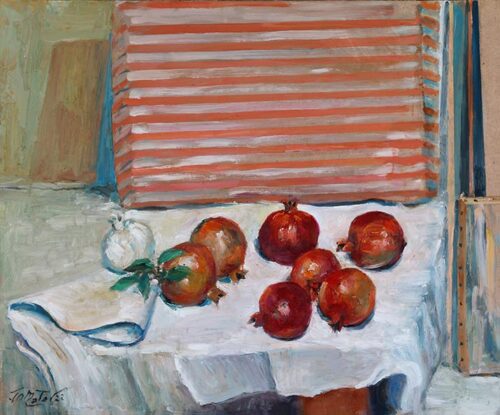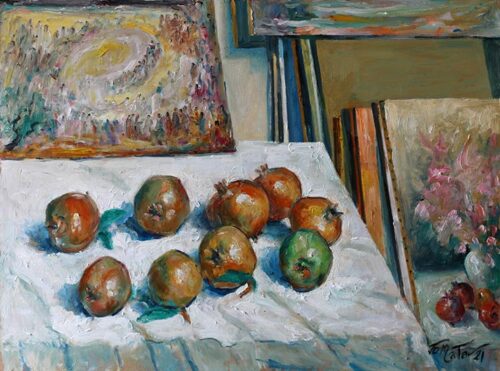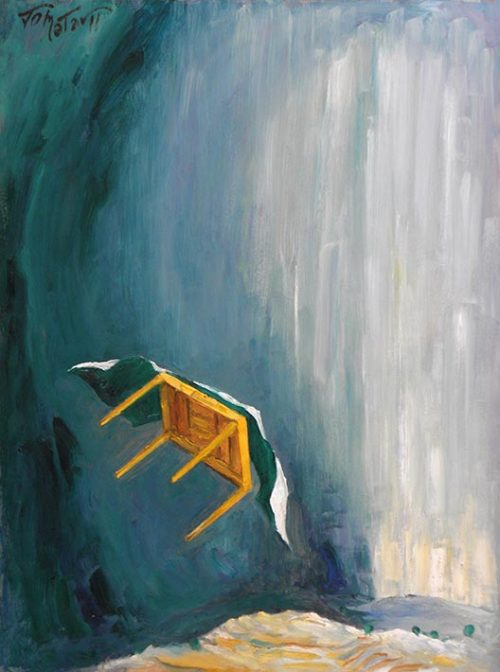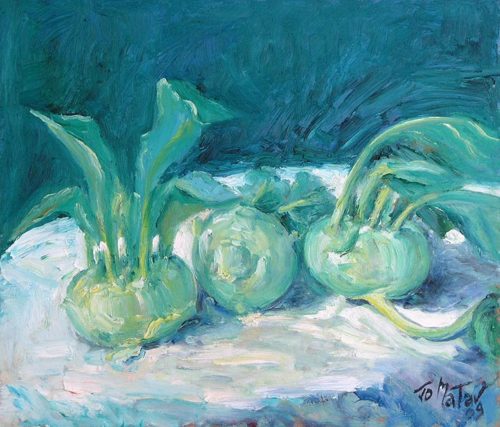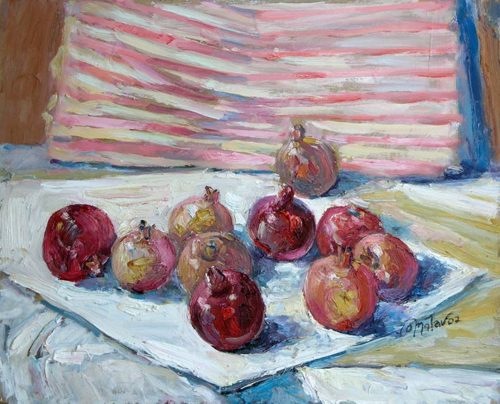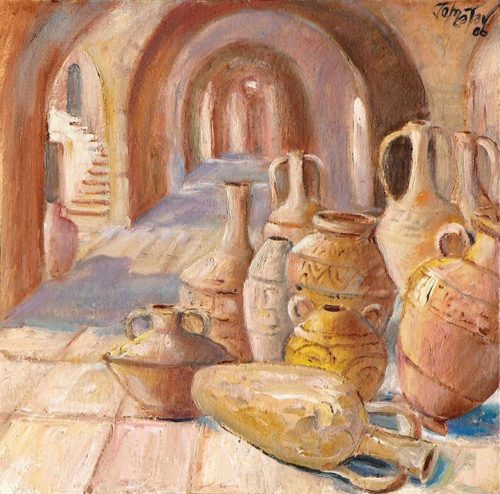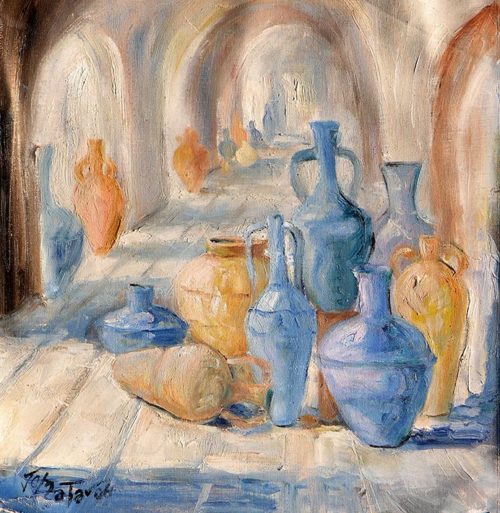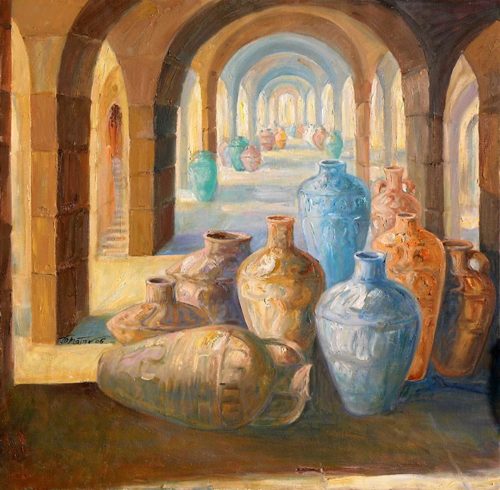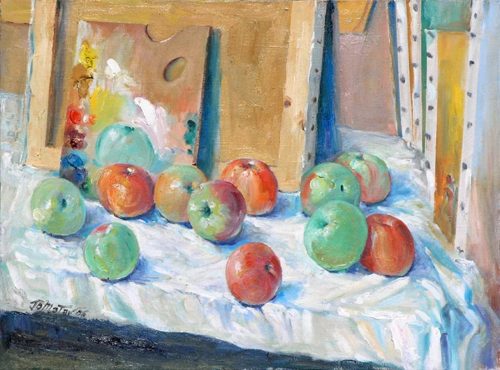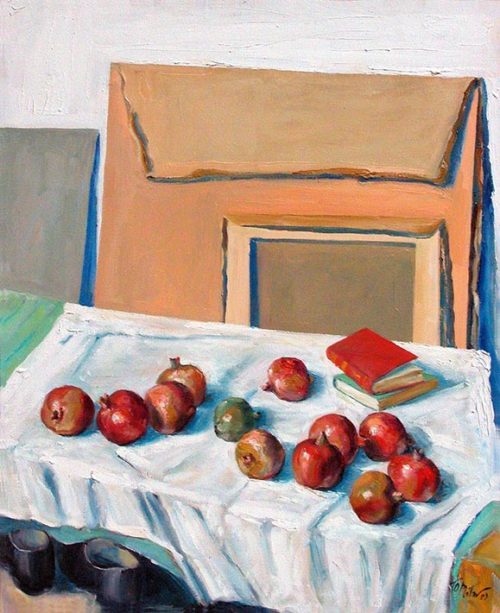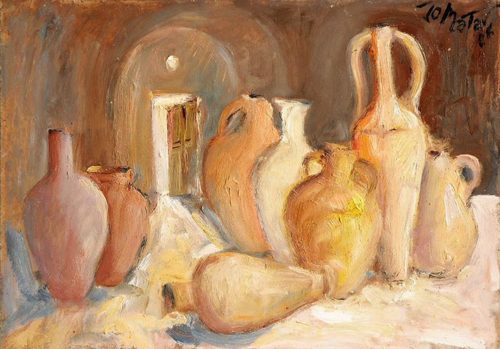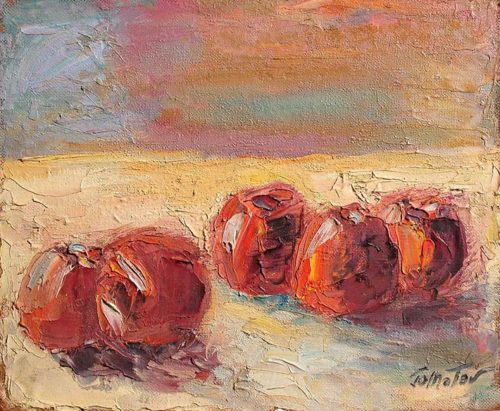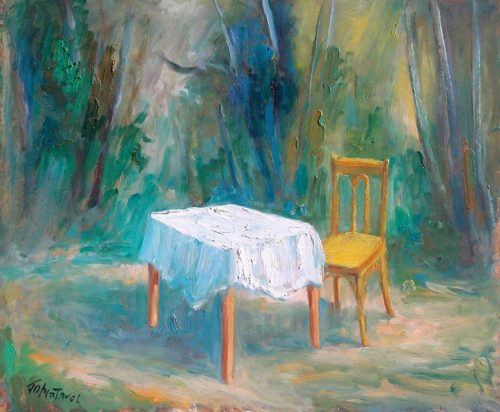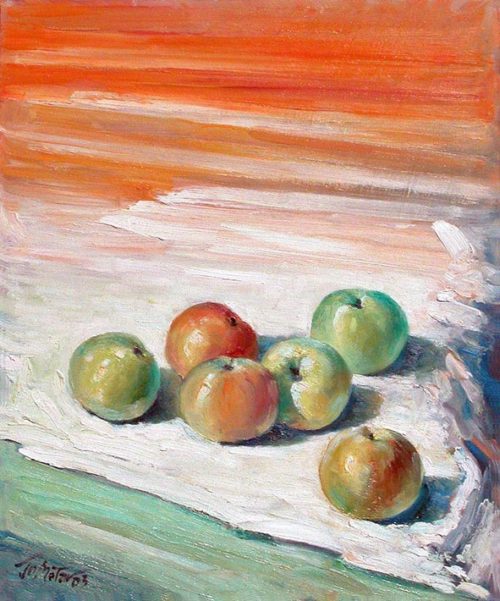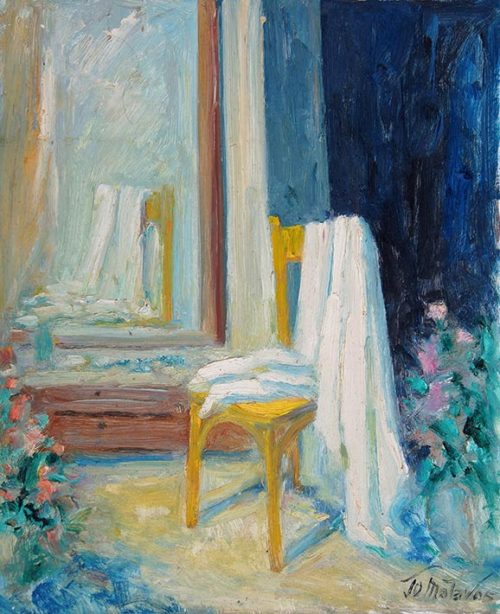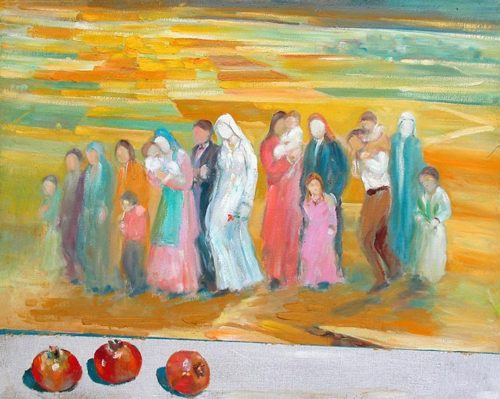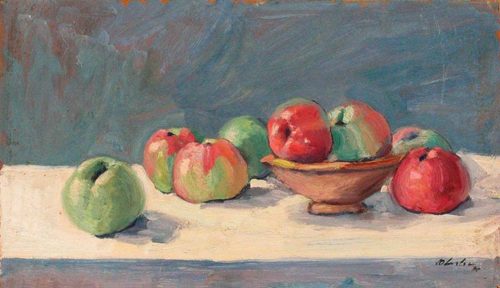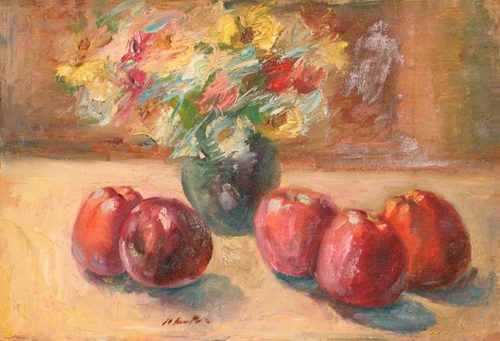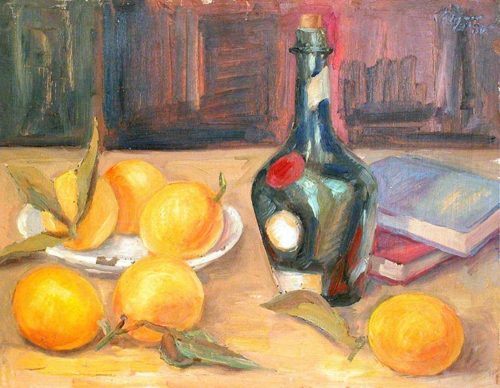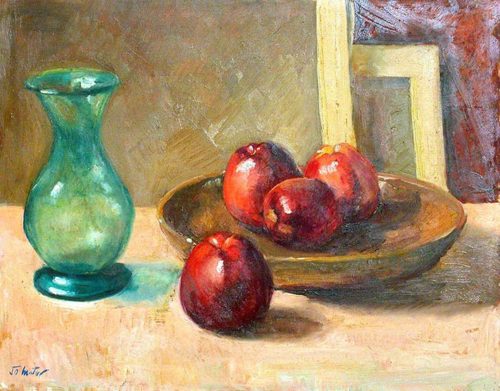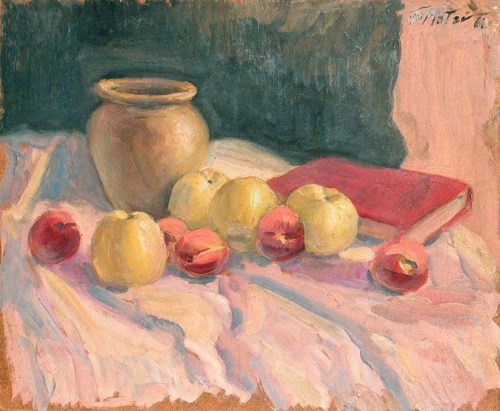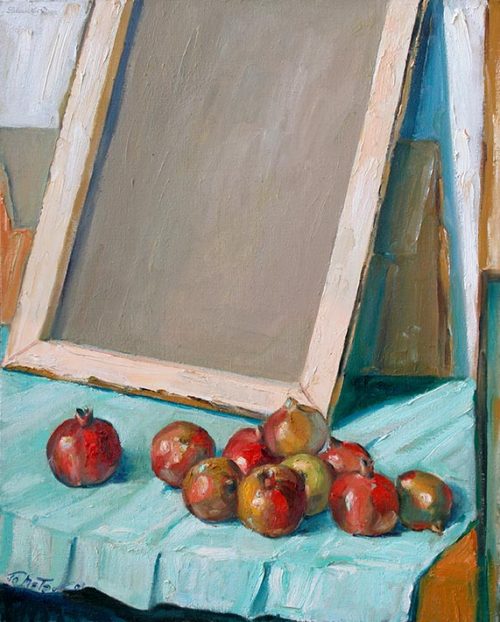Still Life
“Things inanimate, have you then a soul?”
Objects have always been represented in paintings as details, elements, accessories, complements and the like. They have been given a title which perhaps is untrue, “Nature Morte”, in English Still Life, indicating that this particular nature is inanimate – a book, a bottle, a cup, a basket, some fruit perhaps with some drapery. All this has light thrown on it so as to obtain a pleasant chiaroscuro arranged in such a way as to form an entity of its own. It has sweeping lines, diagonals, a distribution, details, a backdrop, symmetries, planes, and a secret geometry leading the gaze agreeably over the work, where one becomes conscious of the studied colors and lights.
It is by no means easy to choose the elements and so to compose a still life and to give it a soul to embrace all within it; it is a creative act of the first order to give a particular individuality to each object, apple, cylinder or cube. Making them vibrate supposes a creative, flaming urge.
In the academies and studios where art is studied, still life has a prominent place. The student can devote all his time to it without any problem. Among the subjects presented as models for still life, one finds compositions of apples, pomegranates, draperies and the like. Whether a portrait be of an apple or of a human figure, the problems and difficulties are the same. The artist’s paintings of still life are a poetic presence full of life and animation.
William Matar



